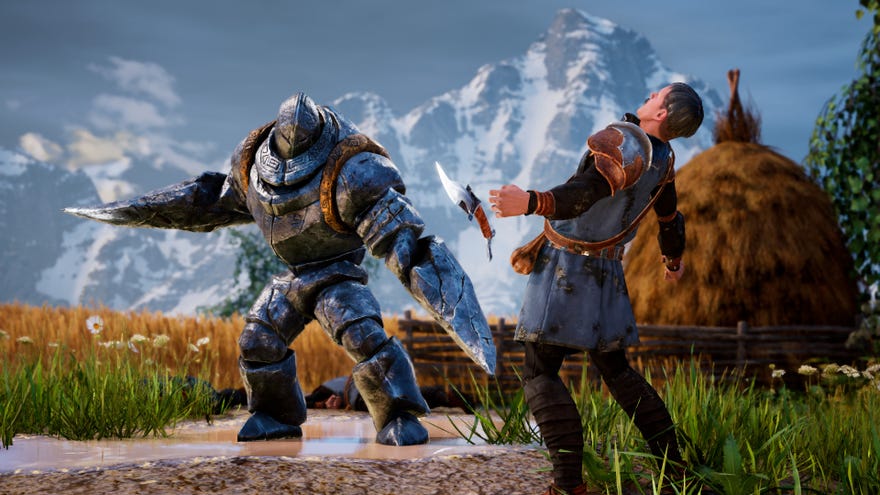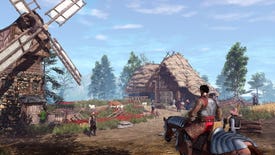Kings Bounty 2 review: good strategy packaged with a baggy RPG
Where does the King stand on other chocolate bars?
You know when you order, say, a single HDMI cable from Amazon and it comes in a cardboard box the size of a dog coffin? That’s King's Bounty 2. Excessively over packaged. There’s a tight, varied, often-challenging Heroes Of Might And Magic-style tactical battler here, but you’ll have to tear through layers of baggy Dragon Age-style RPG to get to it.
Don’t get me wrong. Some of that packaging is really quite nice. Wintery snowscapes. Marble courtrooms with intricate, stained glass murals. Opulently textured facial hair flowing from the chins of impeccably groomed pig farmers. It just feels like King’s Bounty II lacks confidence in itself. Or at least confidence in an audience to give it a second look if it doesn’t at least try to cosplay as a Bioware game.
And I must insist that it is absolutely fair to judge King’s Bounty 2 as an RPG, because a large chunk of it is one. Heaps of voiced dialogue, animated NPCs, big explorable maps, multi-tiered CYOA side quests, cutscenes. Some of it is quite visually beautiful. Less of it is entertaining. Even less feels necessary. I’d wager it’s this stuff that’s whacked it up to a princely fifty quid, too, a price I can’t recommend it at.
However! This isn’t a bad game at all. Discard all that packaging, and, oh! There’s that cable you wanted. A solid core loop: sturdy. Flexible. A touch shiny in the right light. Win battles, get money, hire troops, learn skills, hire new troops. Keep your finances in check. Keep your army healed. Bang your head against that one nightmare battle until you make one tiny adjustment that clinches a victory. All of it is genuinely compelling.
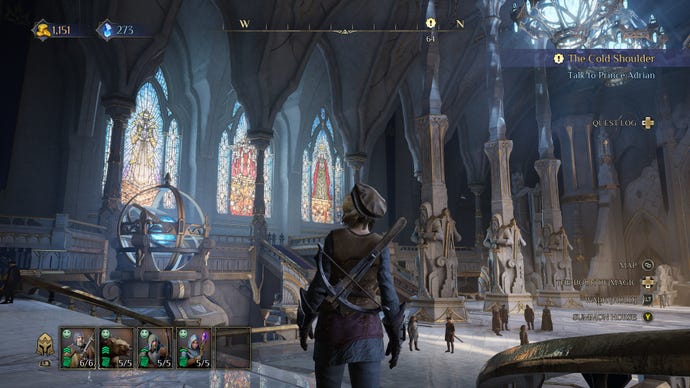
Then, you run out of cash, or hit a wall, so you go a’questing. Light five torches, brave hero. Collect five scrolls, dashing swashbuckler. Take item A to reprobate B, you mug, you absolute tool of a carrier pigeon. It’s the sort of fluff only necessary when trying to justify having such terrifyingly massive maps. There is nothing quite on the level of DA:I’s egregious MMO-style timewasters, but at least then you were gathering plants like a manic apocalypse seedbank prepper in the service of a story and characters worth caring about.
"It’s the sort of fluff only necessary when trying to justify having such terrifyingly massive maps."
The world of King’s Bounty II is....pleasant, in an almost proudly naff way. It’s default fantasy flavour, although I sort of get it, since it originates from a time where simple genre shorthands were necessary for readability. So there are dragons! Trolls! Gryphons! Literally everyone is white for some reason! No, don’t pay attention to that, look over there: it’s a wizard that looks like Gandalf! Remember Gandalf?
Now, there are some fun bits, too. Ever stand around in a dungeon puzzling out which route the designer intended, so you can check all the other routes for treasure and feel like a trailblazing genius? That's often rewarded here. The snatches of lore found in notes and books aren’t incredibly engaging, but they are plentiful and varied. Peasant trysts and noble lineage, myths and legends. Quests contain plots within schemes and character arcs peppered with sardonic humour that, while not gut-busting, isn’t unpleasant. The voice performances often evoke Resident Evil 1 with codpieces, though.
Let’s talk about the tactics, i.e. the good stuff. First, alignments. There are four: Order and Anarchy are opposites, as are Power (Might) and Finesse (Magic). Each corresponds to a troop type and skill tree branch. A pack of ancient wolves is Power, for example, while a deadly cadre of assassins is Anarchy. Story quests offer choices that correspond to an alignment. You choose a path, you get alignment points, you spend experience points (from battles and quests, but a separate thing to alignment points) to move further up that alignment’s skill tree.
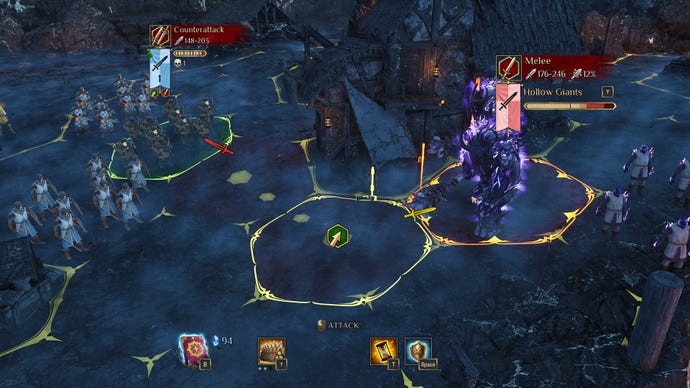
This is something of a double-edged badger cudgel, because while it offers a throughline of strategy-brain pleasing nom-nom-numeric progression, it also hampers the storytelling. Once you make enough choices from one alignment, you get locked out of that alignment’s opposite. Also, if you choose Elisa the Paladin like I did, you’re locked out of Anarchy choices from the start anyway. So it’s more accurate to call this stuff fine-tuning your build rather than participating in a story. Which is fine in theory, but again, dialogue is at least as prevalent as the battles.
The alignment stuff works better for army and character composition. You could build a hardy frontline of Order knights flanked by dastardly Anarchy mercenaries on horseback to swiftly smash into enemy archers, but unless you’ve invested in the right skills, the morale penalty for mixing opposed alignments could be an issue. High morale means the occasional free attack, too, often a game changer. Since each alignment roughly corresponds to certain strategic elements (frontline, ranged, support, damage dealers), spreading your five regiment cap across the alignments might seem prudent. Again, though, not everyone plays nice together.
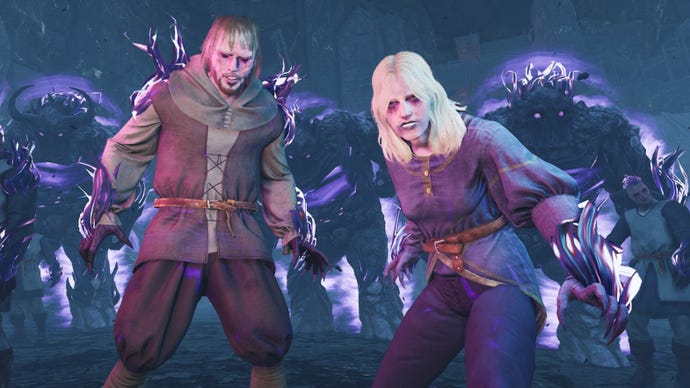
Then there’s your character’s own abilities: Leadership, Warfare, and Magic. Each is influenced by armour, weapons, and jewelry you collect from quests or buy from merchants. Leadership allows you to field bigger regiments - say, ten spearmen instead of seven. Warfare bestows army-wide damage bonus. It’s with Magic that things get really interesting.
There aren’t many twists to the actual hex-based positioning game. No flanking bonuses, very minor terrain effects. Archers can’t fire through houses, for example, a major benefit of home ownership. But magic allows you to manipulate things considerably. Summoning bears. Teleporting entire units across the map. Cracking enemy armour like stale walnuts. Innate unit abilities spice things up, too. I hired some gargoyles that can fly out, attack, then return to their initial hex. Incredibly annoying for the AI, I assume, based on how I feel when it does it to me.
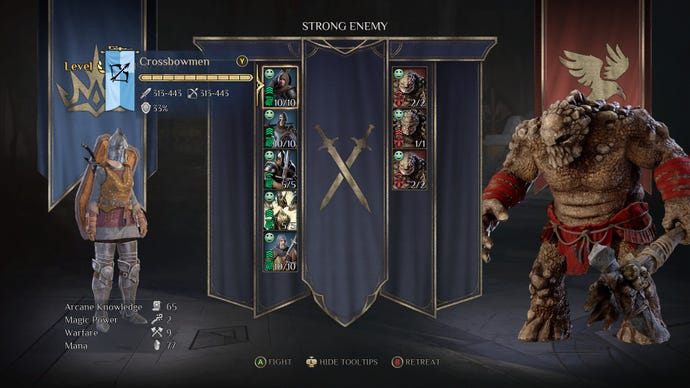
I would have much preferred a slim, stripped back version that still did all this compelling tactical stuff. Songs of Conquest looks nice, doesn’t it? King’s Bounty 2 leaves me with the sense of a workmanlike adherence to genre trends rather than anything particularly creatively fulfilling or naturally complimentary to the core game. While the narrative context and contiguous casualties, experience, and treasury provided by the quests and exploration is good and necessary, it’s just all too puffed up in mostly uninteresting ways.
Right. It’s the final paragraph, and I’m switching metaphors. You know how a King size Bounty bar is actually just three fun size Bounties? Oh no! There’s been a cock-up at the factory, and only one of them has coconut in it. Bin the two extras, charge me a third of the price, and you’ve got yourself a customer. Again, though: Really good coconut, if you don’t mind shelling out a premium for all that plain chocolate.
